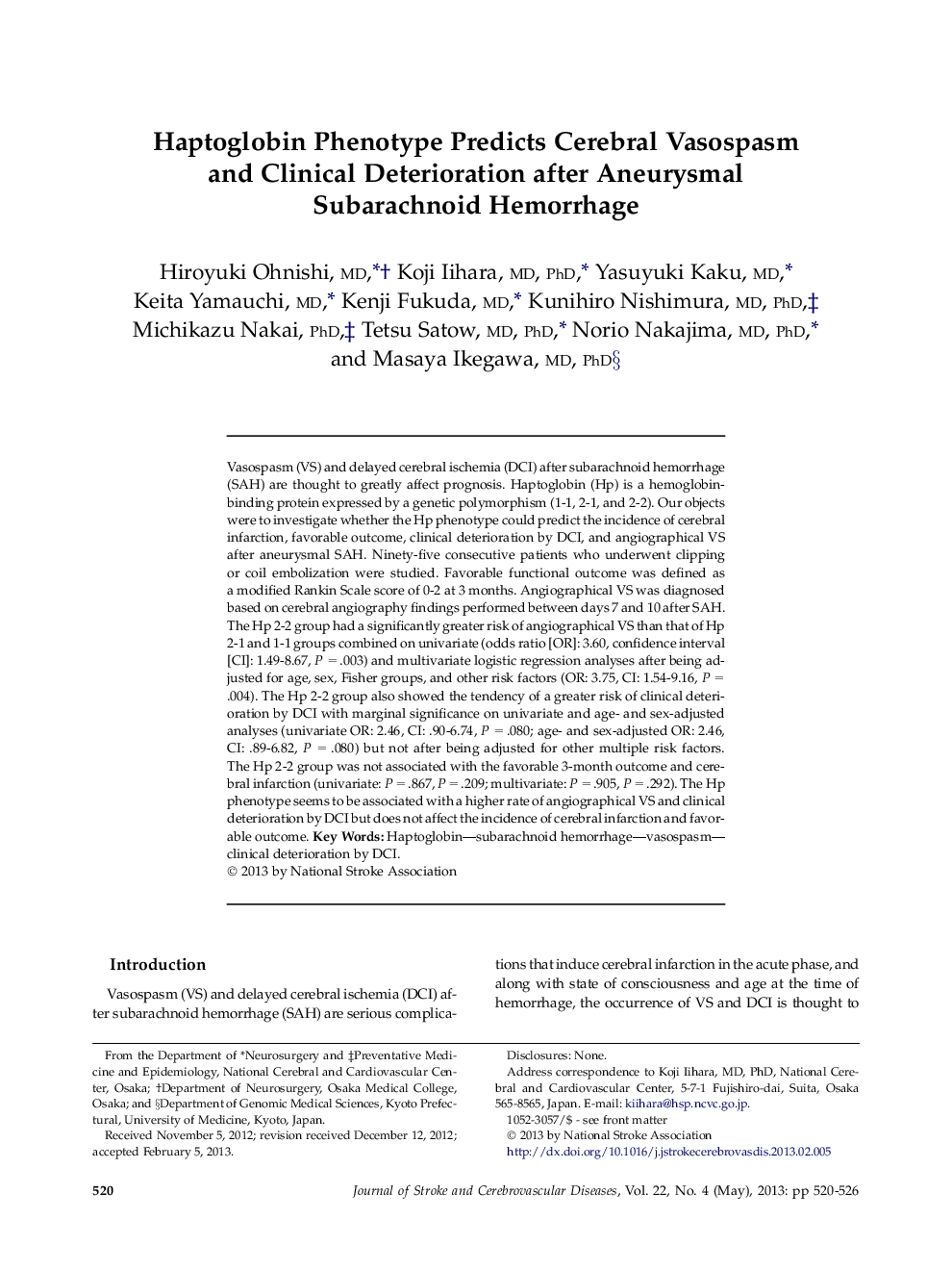| Article ID | Journal | Published Year | Pages | File Type |
|---|---|---|---|---|
| 2710839 | Journal of Stroke and Cerebrovascular Diseases | 2013 | 7 Pages |
Vasospasm (VS) and delayed cerebral ischemia (DCI) after subarachnoid hemorrhage (SAH) are thought to greatly affect prognosis. Haptoglobin (Hp) is a hemoglobin-binding protein expressed by a genetic polymorphism (1-1, 2-1, and 2-2). Our objects were to investigate whether the Hp phenotype could predict the incidence of cerebral infarction, favorable outcome, clinical deterioration by DCI, and angiographical VS after aneurysmal SAH. Ninety-five consecutive patients who underwent clipping or coil embolization were studied. Favorable functional outcome was defined as a modified Rankin Scale score of 0-2 at 3 months. Angiographical VS was diagnosed based on cerebral angiography findings performed between days 7 and 10 after SAH. The Hp 2-2 group had a significantly greater risk of angiographical VS than that of Hp 2-1 and 1-1 groups combined on univariate (odds ratio [OR]: 3.60, confidence interval [CI]: 1.49-8.67, P = .003) and multivariate logistic regression analyses after being adjusted for age, sex, Fisher groups, and other risk factors (OR: 3.75, CI: 1.54-9.16, P = .004). The Hp 2-2 group also showed the tendency of a greater risk of clinical deterioration by DCI with marginal significance on univariate and age- and sex-adjusted analyses (univariate OR: 2.46, CI: .90-6.74, P = .080; age- and sex-adjusted OR: 2.46, CI: .89-6.82, P = .080) but not after being adjusted for other multiple risk factors. The Hp 2-2 group was not associated with the favorable 3-month outcome and cerebral infarction (univariate: P = .867, P = .209; multivariate: P = .905, P = .292). The Hp phenotype seems to be associated with a higher rate of angiographical VS and clinical deterioration by DCI but does not affect the incidence of cerebral infarction and favorable outcome.
